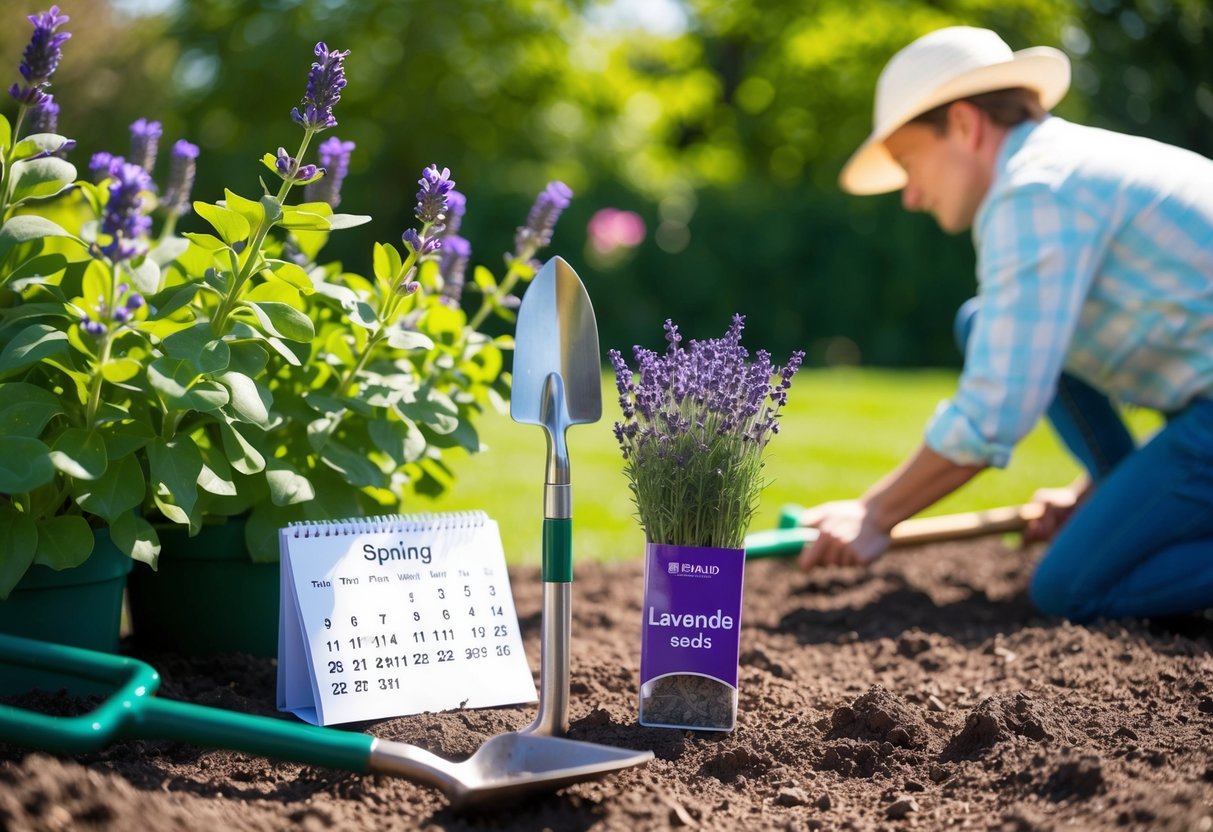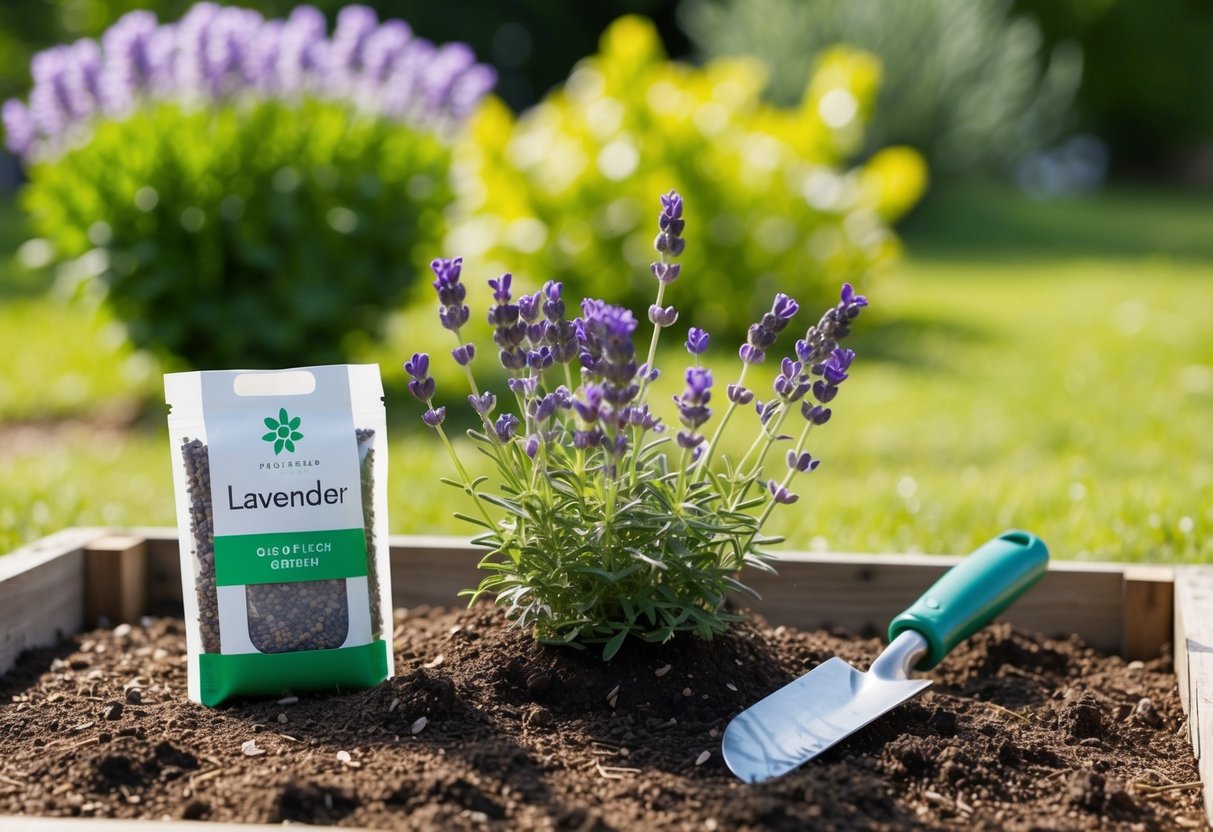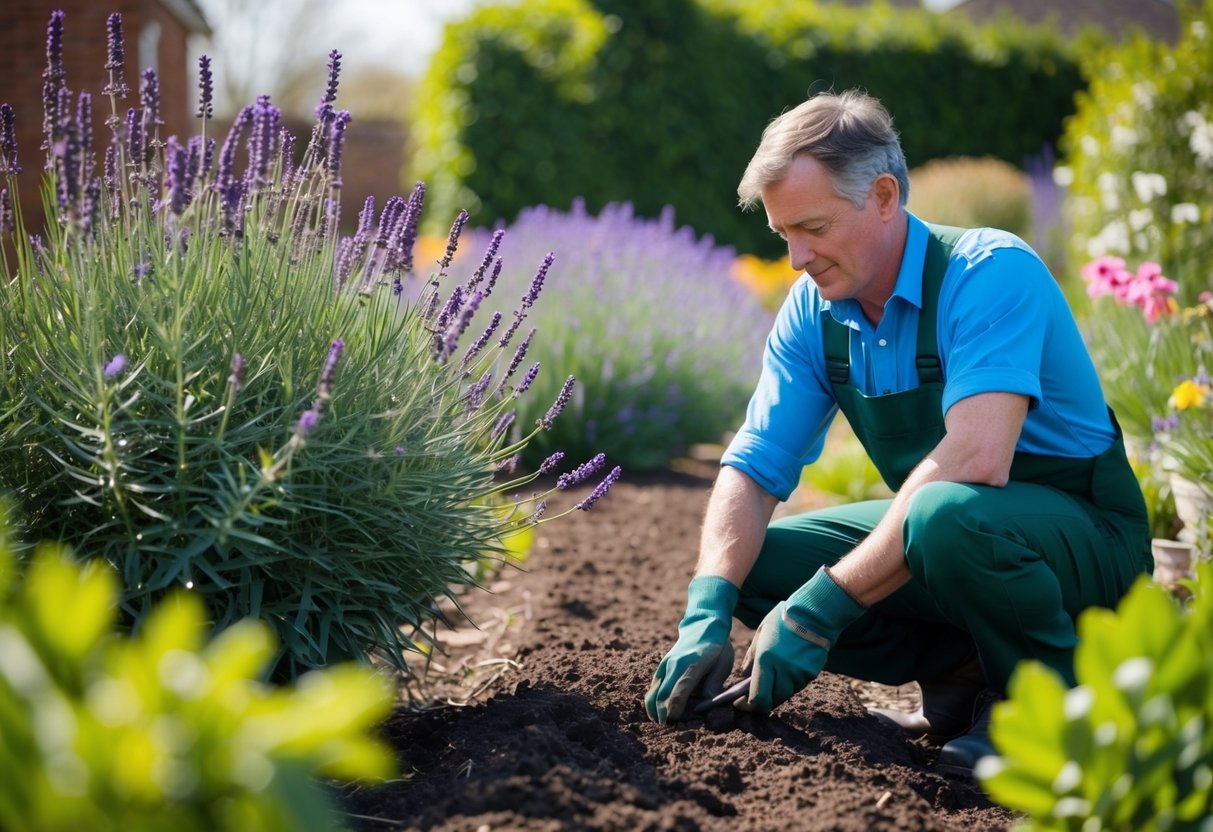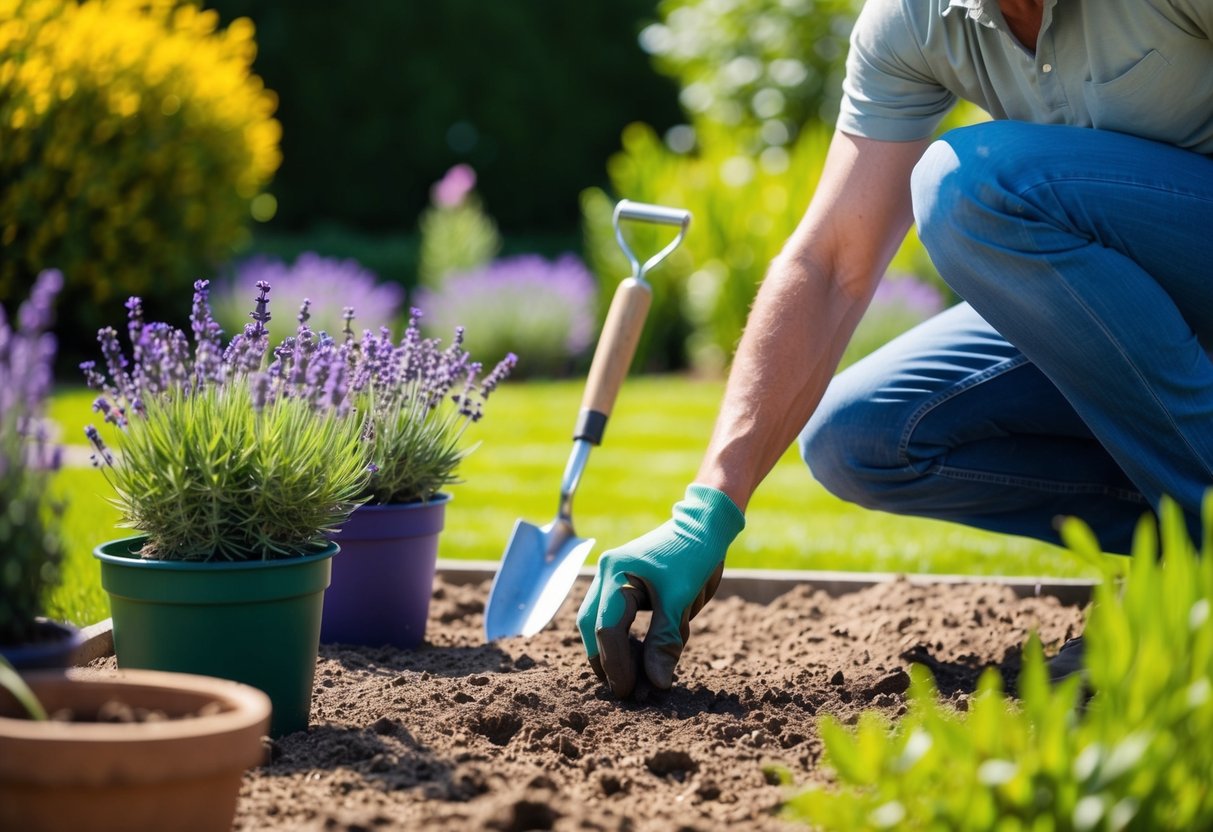When to Plant Lavender in the UK: A Seasonal Guide
Growing lavender in your garden can transform your outdoor space with its beautiful purple flowers and calming scent. For the best results, plant lavender in the UK during early spring or early autumn, depending on your region’s climate. Milder areas, like Zones 6 and 7, may have more flexibility with timing.

When adding lavender to your garden, consider the type of soil and the amount of sunlight available. Lavender thrives in well-drained soil and sunny spots. If your soil is heavy or tends to retain water, think about planting on a raised bed or mound to prevent water from collecting around the roots. Adjustments like these can make a big difference.
Lavender is not only a stunning addition to your garden but also easy to care for. It’s a perfect choice for gardeners of all experience levels. With the right planting time and conditions in mind, you’ll soon enjoy a picturesque and fragrant lavender display.
Understanding Lavender Varieties

Lavender varieties can add distinct character and beauty to your garden. Choosing the right type depends on factors like climate and soil conditions. Whether you’re interested in hardy or tender lavender, understanding these differences will help your plants thrive.
Choosing Lavender for Your Garden
There are several popular lavender varieties for you to consider. English lavender (Lavandula angustifolia) is a favorite because it is hardy and has a strong fragrance. Perfect for cooler climates, it adds a classic touch to gardens with its deep violet flowers.
French lavender (Lavandula stoechas) is known for its showy, butterfly-like flowers. This type is less hardy and prefers warmer climates. Spanish lavender (Lavandula dentata) features toothed leaves and is more tender, making it suitable for containers or sheltered areas. Lavandula x intermedia, a hybrid, combines the hardiness of English lavender with the size and vigor of French varieties. Think about your climate and garden needs when selecting your lavender type.
Difference Between Hardy and Tender Lavender
Hardy lavenders like English lavender are well-suited to colder climates. They can withstand harsh winters and bounce back strong in the spring. Their robustness makes them perfect for outdoor planting, even in less-than-ideal conditions.
On the other hand, tender lavenders such as French and Spanish varieties prefer milder climates. They thrive in sunshine and are less resistant to cold. These varieties require more care in winter months and are often grown in pots to be moved indoors during cold snaps. Understanding these differences between hardy and tender lavender helps you provide the best environment for your plants.
Optimal Planting Times

To grow healthy lavender in the UK, timing your planting is key. The soil temperature and weather conditions are crucial for young lavender plants to thrive. Understanding when to plant lavender can help ensure vibrant growth.
Considering the UK Climate
In the UK, the best time to plant lavender is typically in early spring, particularly in April and May. This time frame allows the plant to establish roots when the soil is naturally warming up. Warmer soil helps the roots grow before the harsh summer sun arrives.
You can also plant lavender in September, as the soil is still warm from summer. This late-summer planting ensures that the plants can establish a bit before winter. Be cautious, though, because lavender is sensitive to cold, and frost can damage young plants. Avoid planting in winter when temperatures drop. For more details, see garden borders.
Soil Preparation and Planting Techniques

To plant lavender successfully in the UK, focus on preparing the soil well. Start with ensuring good drainage, particularly in heavy soils, to prevent waterlogging. Additionally, aim for the right alkalinity in the soil to support lavender’s growth needs.
Improving Drainage in Heavy Soils
Lavender thrives in well-drained soil. If your garden has heavy soil, such as clay, you’ll need to improve drainage. One effective method is to add horticultural grit or sand to the planting area. This helps break up compact soil and allows water to pass through easily, preventing roots from sitting in water. Creating a raised bed or planting on a mound can also enhance drainage by elevating the roots. This technique ensures the soil does not hold excess moisture, which can harm lavender plants.
Another option is to mix organic matter like compost into the soil. This not only improves drainage but also enhances the soil structure. Make sure to dig the amendments into the soil to about 12 inches deep so they are well integrated.
Ensuring the Right Soil Alkalinity
Lavender prefers slightly alkaline soil with a pH between 6.5 and 7.5. If your soil is too acidic, you can adjust this by adding lime, which raises the pH level. Test your soil’s pH before planting lavender, as this will guide you on the amount of lime needed.
It’s best to conduct a soil pH test, available from garden centers, to get accurate results. If needed, follow the instructions on lime packages to ensure you add the correct amount. Keeping the soil at the right alkalinity helps lavender fully absorb nutrients and flourish in its environment.
Caring for Your Lavender

Lavender needs proper care to thrive and maintain its beautiful blooms. Focus on watering and pruning to keep your lavender healthy and vibrant.
Watering Requirements
Lavender is known for being drought-tolerant, which means it doesn’t need much water. Overwatering can be harmful, so it’s important to get the balance right. Water your lavender deeply but infrequently. In most cases, watering once a week is adequate, especially in dry periods.
Ensure the soil offers good drainage to prevent rot. In containers, choose pots with drainage holes and let the soil dry out between waterings. Check the top inch of soil; if it’s dry, it’s time to water again. Regularly monitor your plants and adapt to changing weather conditions for best results.
Pruning Techniques
Pruning is essential to keep your lavender bushy and full. The best time to prune is after it finishes flowering in late summer. Cut back the plant by about one-third, removing old flower stems and shaping the plant. This encourages new growth and prevents the plant from becoming woody.
Allow air circulation around the base to prevent mold and disease. For older plants, a more severe prune may be necessary to rejuvenate them. Use sharp, clean shears to ensure clean cuts. Regular pruning helps maintain a tidy appearance while promoting strong growth in the following season.
Benefits and Uses of Lavender

Lavender is versatile, offering both beauty and function. It enhances gardens with its stunning flowers while attracting beneficial wildlife. Additionally, the plant has many practical applications, from crafting fragrant oils to culinary uses.
Lavender in Landscaping
Adding lavender to your garden can transform its appearance and atmosphere. A lavender hedge offers a rustic charm often seen in cottage gardens. The vibrant, fragrant flowers can brighten up any space and are perfect for creating focal points. In small settings, try incorporating lavender into a herb garden to enjoy both its beauty and practicality. Lavender also thrives in dry, sunny spots, making it ideal for various landscapes.
Lavender for Wildlife
Lavender is exceptionally attractive to bees and other pollinators like butterflies. Its flowers offer a rich nectar source, particularly valuable in urban gardens that often lack natural habitats. By planting lavender, you support pollinating insects crucial for biodiversity. You’ll observe more bee activity, benefiting your garden’s health and productivity. Besides, lavender’s delightful scent is an added bonus for you to enjoy while aiding the ecosystem.
Harvesting and Utilizing Lavender
When harvesting lavender, timing is crucial for the best fragrance. This usually means cutting just as the buds open. The flowers can be dried to create sachets or potpourri. Lavender oil is another popular use, either as a calming scent or a key ingredient in perfumes. Additionally, culinary uses include infusing sugars or creating delicate herbal teas. Proper harvesting ensures you get the most from your plants year after year.







